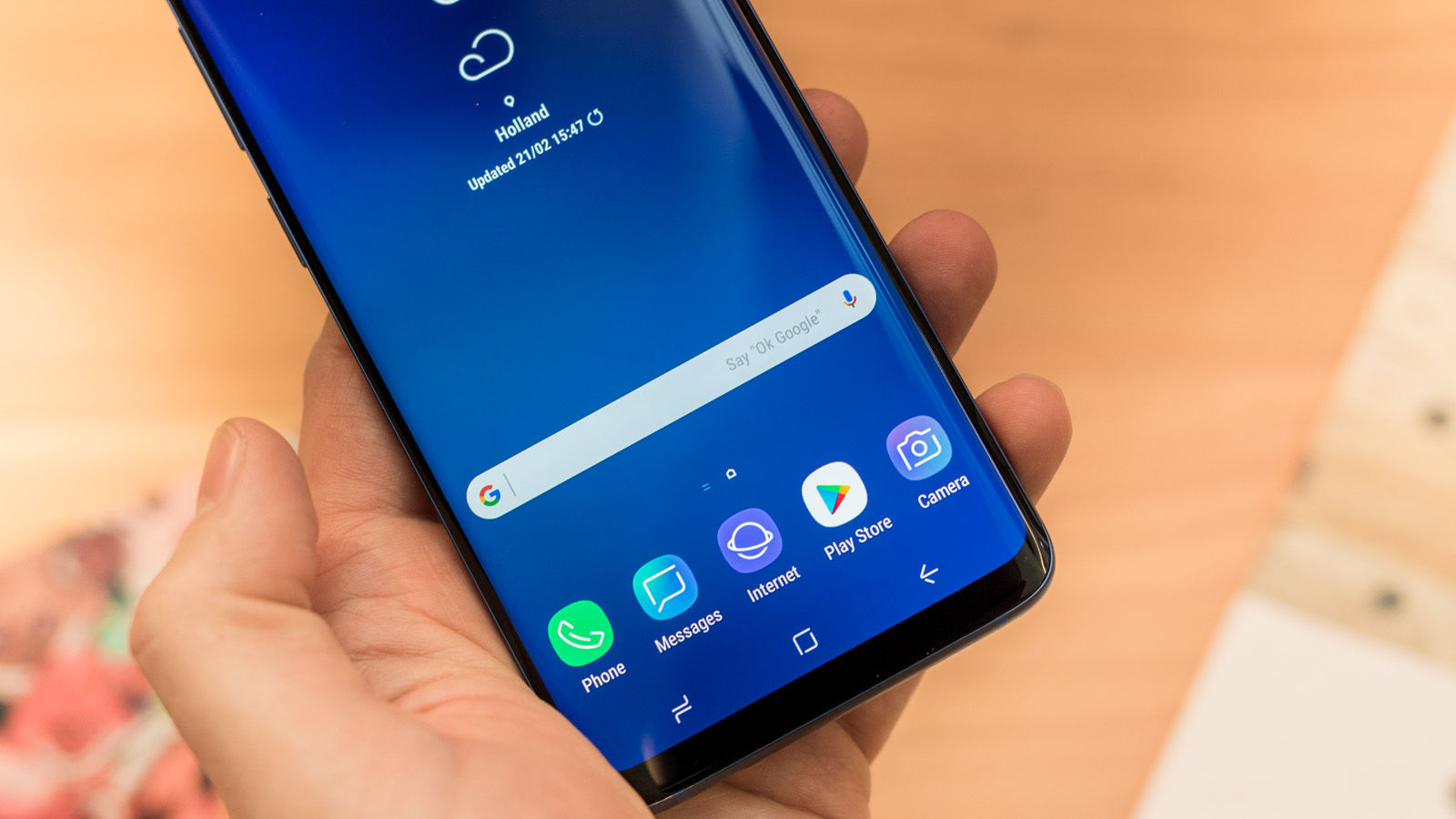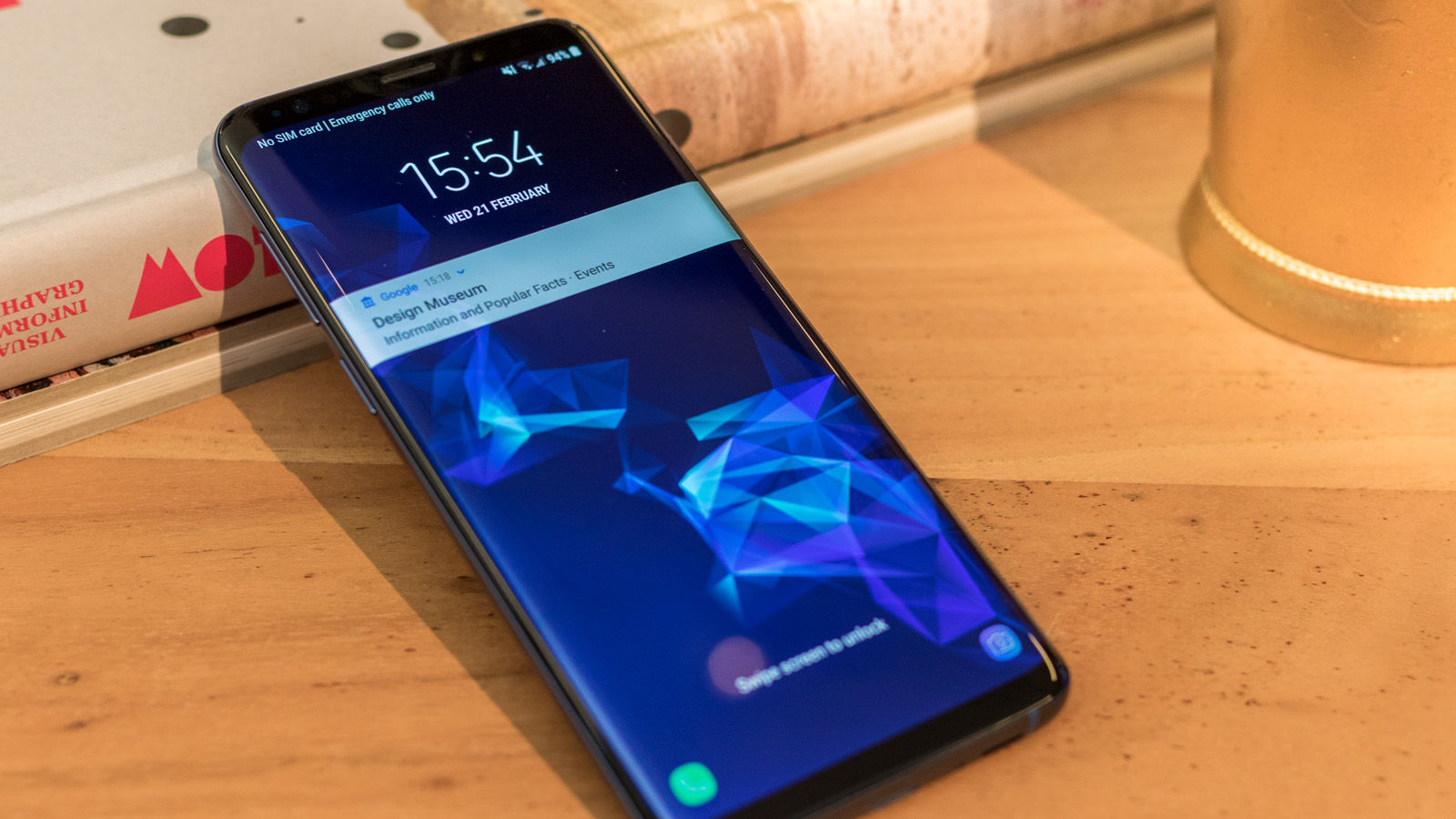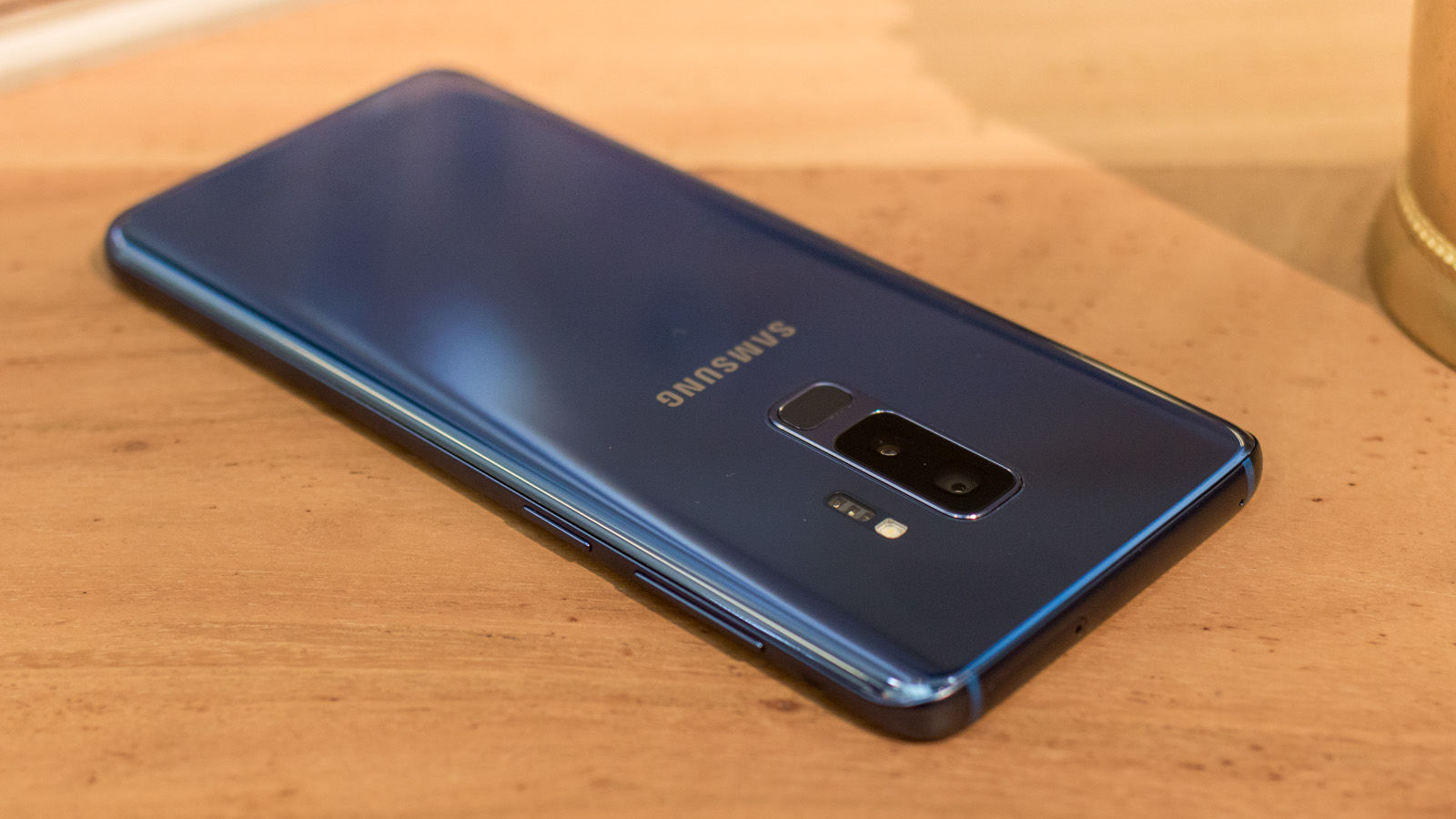(Also read our Samsung Galaxy S9 review.) The Galaxy S9 Plus might not be the biggest upgrade compared to the Galaxy S8 Plus but it’s perhaps better than having to wait longer for a new device. Overall you might struggle to tell the new Galaxy S9 Plus apart from its predecessor, apart from the new purple colour, but there are improvements namely in the camera department which Samsung says it has ‘reimagined’.
Price and release date
Along with the regular model, the Galaxy S9 Plus is available to buy. Customers who pre-ordered will have had the phone seven days early ahead of the 16 March release date. See the best Galaxy S9 Plus deals here. Samsung has given the 2018 flagship range a price hike so the smaller model will now cost you £739/$719 and the Galaxy S9 Plus now has an increased price tag of £869/$839 (up from £779) – more than the equivalent iPhone 8 Plus but cheaper than the iPhone X. That’s quite a big difference between the Galaxy S9 Plus and regular S9 for price, but you’re paying for things like a bigger screen, dual cameras, a larger battery and more storage. Other rivals to the S9 Plus include the £799 Huawei P20 Pro and due to its 6in screen, the £379 Sony Xperia XA2 Ultra.
Design and build
Since the Galaxy S9 Plus is an incremental upgrade from last year’s smartphone, there’s not a huge amount to say when it comes to design and build. Samsung hasn’t changed much about the handset at all. In fact, you might struggle to figure out which one is the new model in a side-by-side test unless you’re looking at the new Lilac Purple colour. There’s also Midnight Black and Blue Coral to choose from and the Titanium Grey model we spotted Samsung demo videos is now available from Carphone Warehouse. At the front, the phone looks near enough identical to the S8 Plus. It’s really no surprise Samsung is sticking to the gorgeous design that features the Infinity display. The phone is marginally shorter and the firm has made the bezels a tiny bit smaller but it’s not something noticeable. The eagle eyed of you might notice the matte finish the the metal frame which looks nicer compared to the S8 Plus glossy coat. Another minor tweak is is a single slot for the speaker rather than five small holes. The main giveaway that this phone is the Galaxy S9 Plus and not an old model is at the back. Firstly there are dual cameras, previously a feature only available on the Note 8. We’ll talk about the camera tech later on. The other tweak is the placement for the fingerprint scanner, which is now below the camera array rather than to the side. This was a bugbear on the S8 phones, especially the S8 Plus where the senor was quite a stretch to reach. You’re still at risk of smudging the lower camera but at least the sensor isn’t annoying low down the phone like the Xperia XZ2. Also see: Samsung Galaxy S8 vs Galaxy S9 So with a near identical design, Samsung is sticking to an aluminium band with glass front and back. The Galaxy S9 Plus still offers top-end IP68 waterpoofing and gladly hasn’t ditched the headphone jack. The glass back looks great when it’s clean but like most is a bit of a fingerprint magent and makes the phone quite slippery. We don’t even mind that the device is a bit thicker at 8.5mm. Although the S9 Plus has more tech to offer, it’s worth noting that it is still a bit unwieldy, especially for those with smaller hands and weighs in at 189g so isn’t exactly a featherweight. This should be one of the main things to think about if you’re trying to choose between the S9 models.
Specs and features
If you can deal with, or even actively want, the larger size of the Galaxy S9 Plus, then you do gain various advantages over the smaller S9 model. Yes it costs more, but it’s easily the more technically advanced and exciting device.
Screen
The display remains the same as last year so opting for the Galaxy S9 Plus gets you a 6.2in screen over the 5.8in display on the regular S9. It’s Samsung’s now trademark Infinity Display so you get an 18.5:9 aspect ratio and curved edges on both sides. A Quad HD Plus resolution (Full HD Plus is used by default but you can change it) means everything is once again as crisp as you like and it’s no surprise Samsung sticks to its bright (max 324cdm2) and colourful SuperAMOLED technology. As usual the screen is always on so displays useful information without consuming much battery while the screen is ‘off’. You also get the edge panels, which bring shortcuts to apps, contacts and far more by swiping in from the side. You might have noticed that Samsung is one of the only brands to opt against a ‘notch’ at the top like the iPhone X. We’re not quite sure why others are so keen to copy Apple and even though some provide a way to switch the feature off, we like the fact Samsung has stuck to the regular style here.
Processor, memory and storage
Like the regular S9, the Galaxy S9 Plus is powered by the new Exynos 9810. The chip that’s still octa-core but gets a bump in clock speed to 2.7GHz for the faster four. This is the model we’ll get in the UK but other markets such as the US and China will get the S9 Plus with a Qualcomm Snapdragon 845. Either way these are brand-new processors, where rivals like the Nokia 8 Sirocco are using the older Snapdragon 835. Power users will be pleased to hear that the S9 Plus has more memory and storage compared to the S9 with 6/128GB. That’s an extra 50 percent in RAM and double the storage. We have seen a spec sheet with a 128GB model but this seems to be very elusive at best. There’s less need to use the microSD card slot, which now accepts up to 400GB, but it’s great that Samsung continues to offer the feature where others often don’t. As you can see in the graph below, the S9 Plus benchmarks very well breaking the 9,000 barrier in Geekbench 4 which isn’t too far off the iPhone X. Graphics, tested at the default Full HD Plus resolution, are excellent, too. Overall, it’s exactly what we’d expected from a flagship phone at this price and with these specs. In the real world the S9 Plus is a smooth performer indeed and there are plenty of other areas where phones are different in 2018 so don’t worry about the numbers too much.
Fingerprint and Iris sensors
As mentioned earlier, the fingerprint scanner has been moved to a much more sensible location below the camera. It’s a lot easier to find with your finger without stretching too much, although there’s still a risk of smudging the lower lens. Samsung has also made it easier to add fingerprints as you only need to swipe three times per finger – we did it in just two. There’s still an iris scanner, something which we’ve not been a fan of on previous Samsung phones. However, Intelligent Scan means you can use it in combination with facial scanning. It’s a lot better than previously, but rival face unlock systems including Apple and OnePlus are still better.
Connectivity and Audio
Top-level connectivity means the S9 Plus is packed with the tech you’d expect, including dual-band 11ac Wi-Fi, Bluetooth 5.0, NFC and GPS. There are also plenty of sensors including the pressure sensor in the screen that is used a sort of physical home button. The Galaxy S9 Plus still comes with features like a barometer and heart rate monitor which not many phones have. The change comes in the audio department as the smartphone now has stereo speakers. They’re still tuned by AKG and Samsung has also teamed up with Dolby to offer Atmos, a feature you can toggle to provide a bigger, more spacious sound. They’re not the best speakers on the market but it’s a lot better than before and we’re super pleased that Samsung has kept the headphone jack.
Cameras
As teased with its ‘The Camera. Reimagined’ campaign ahead of the launch, it’s the camera on the Galaxy S9 phones that’s had the biggest upgrade. The rear Super Speed Dual Pixel camera is still 12Mp but has an innovative mechanical aperture akin to a dedicated DSLR. This can automatically adjust between f/2.4 down to f/1.5 depending on the lighting conditions you’re shooting in. The Galaxy S8 was an already impressive f/1.7 so this is a nice step up. Samsung says it means 28 percent more light. The phone can also now use information from 12 photos shot at once to reduce noise by 30 percent. Compared to the S9, the plus models brings with it an additional lens. Like the Note8, it’s a telephoto lens with a 12Mp telephoto with an f/2.4 aperture – great if you like getting a closer shot without using digital zoom. You can see the difference between the two rear lenses in our Flickr album below, which also includes some other test shots. Overall the Galaxy S9 Plus is an impressive all-rounder for photography and video (see below for more on that). The camera app is easy to use with different modes and excellent results from simply firing it up and shooting in auto. Shots are detailed, crisp and nicely exposed but it’s not the best camera out there in great lighting conditions. The Pixel 2 XL can provide better contrast and detail in darker areas. We’re nit picking but we have to at this level. The Galaxy S9 is a better performer in low light, though, and that dual aperture is handy when you don’t want the shallow depth of field enforced by a wide aperture. We’ll be doing a camera shootout including other great camera phones soon to compare them all in detail.
The Galaxy S9 Plus can now match Sony for super slow motion at 960fps (at 720p) which means you can watch 0.2 seconds of footage over 6 seconds. Such a short period of time can be hard to capture, as we found on the Xperia phones, but Samsung has a clever motion detect which automatically starts the super slow motion when it, er, detects motion in a user selected area of the frame. It works really well and you can even record up to 20 slow motion sections in one video. Here’s our sample from the S9 which has exactly the same feature.
It terms of regular video, the S9 Plus is a decent performer. The phone features optical image stabilisation (OIS) which helps keep things nice and smooth. By default it will record at Full HD but you can switch it up to Ultra HD at 60fps if you want (and don’t mind larger files and a limit of five minutes). Below is our test footage at standard settings.
Selfie fans will still get decent photos from the front facing 8Mp f/1.7 camera which now has a feature to rival the iPhone X’s Animoji. Samsung’s version is called AR Emoji and created a character based on you. It instantly created 18 preset gifs but you can customise your own with the front camera, winking and frowning to your hearts content. You also don’t need to worry about who you’re sending them to as they don’t need an S9 too. They’re easily accessible from the default keyboard which is handy. The problem comes when you want to animate the AR Emoji yourself using the front camera. What is accurate tracking on the iPhone X is jittery and poor on the S9 Plus. It’s not enough to put us off the phone though as the feature is a gimmick and a minor part of the overall experience. Bixby Vision is an existing feature but it’s now improved with things like live translation, better recognition for places and food features like calories and recipe suggestions. It’s handy as the feature is built into the camera app but while some elements are useful, others are just gimmicks.
Battery life
Another advantage over the regular Galaxy S9 is that you get a larger battery here, so carrying around the extra weight might be well worth it. While the Galaxy S9 has a 3000mAh battery, the S9 Plus offers 3500mAh. The Galaxy S9 Plus will comfortably last a full day of average users and lighter users might even get a day and half out of it. In the Geekbench 4 battery test, the S9 Plus managed an impressive seven hours and 55 minutes with an efficiency score of 4750. That’s similar to the LG V30 and more than a hour longer than most flagships. The S9 managed six hours and 38 minutes as 3890. Once again you have the option to charge over USB-C or with wireless charging – both offer fast charging. In our usual test, the S9 Plus managed a decent 38 percent in 30 minutes starting from zero. That’s two percent more than the regular S9 despite having a larger battery.
Software and apps
Moving onto software and the Galaxy S9 Plus comes pre-loaded with Android 8 Oreo, the latest version of Google’s mobile operating system. That’s no surprise and nor is the fact that Samsung uses its own interface. Things are pretty much they same as last year with only small tweaks, the main things come inside the camera app which we’ve already detailed. Samsung has pre-loaded the Galaxy S9 Plus will plenty of apps but nothing too annoying or intrusive – they’re the usual selections from Google and Microsoft so you’ll likely use most of them regularly. We’d still like the ability to uninstall them, not just disable though. Tweaks come in the form of a new landscape mode so you can carry on using the interface lengthways to browse your homescreen panels or your apps. A notification system means you’ll still see what’s going on but in a subtle way at the top. A new SmartThings app is a nifty way, similar to Google and Apple Home apps, to combine multiple apps into one. It means you have one place to handle all the connections to and features of other Samsung devices like TVs. Those wanting to use the Galaxy S9 Plus for productivity can make use of the new DeX dock which means the phone can be easily plugged into a monitor for a desktop-like experience. The docking station is now flat so the screen can be used as a trackpad or keyboard and it will be around two-thirds the price of the original.
Related stories for further reading
Best phone deals Best SIM-only deals Best phone network All smartphone reviews Best smartphones How we test smartphones Best new phones coming soon
Tech Advisor’s Reviews Editor, Chris has been reviewing all kinds of tech for over 10 years and specialises in audio. He also covers a range of topics including home entertainment, phones, laptops, tablets and more.










